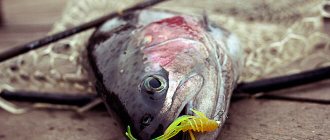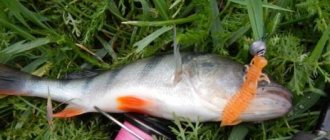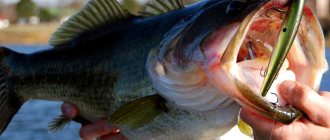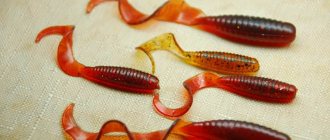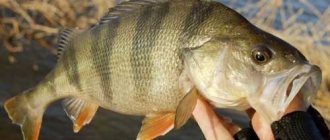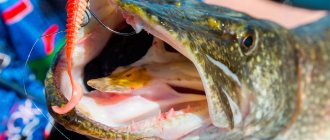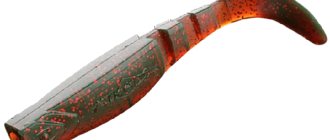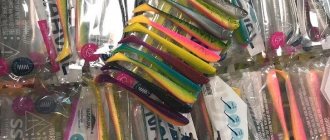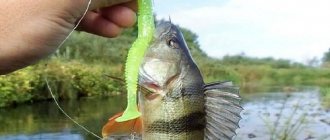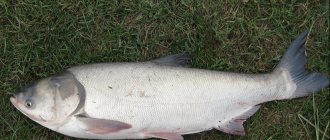There are spinning anglers who are adherents of traditional methods of fishing with well-known baits, such as spinners or spoons. Storing baits is not a problem for them - you just need to dry the lures after fishing to prevent corrosion of the hooks and fittings.
Other anglers tend to experiment and use different types of baits during fishing, including silicone and bulk.
On their next fishing trip, they may have problems with storing silicone baits and other types of bait together. How to store silicone baits? Every spinner should know these simple rules.
Basics of proper storage
The duration of their use, their suitability for fishing and, ultimately, their catchability depend on how well the angler stores silicone baits
The basic rules for storing silicone baits are as follows:
- Silicone baits should be stored separately from other types of baits. When storing silicone together with other baits, silicone streaks may appear on the latter, which can be removed with alcohol, although this may damage the paintwork of the baits;
- edible and inedible rubber must be stored separately, since some types of “edible” contain active reagents that corrode ordinary rubber;
- some types of floating silicone baits can adversely affect not only other silicone, but also the material of storage boxes;
- baits of different colors should be stored separately to avoid mutual coloration;
- It is advisable to remove silicone baits from the hooks on which they are mounted, or at least not to leave them mounted for a long time. The hooks corrode and, in turn, damage the silicone at the points of contact;
- Avoid storing silicone baits in the sun. Ultraviolet light, especially when interacting with water, has a negative effect on silicone. Therefore, opaque storage boxes are preferred.
Storing wobblers
Storage of this type of bait requires conditions that prevent them from coming into contact with each other, leading to the tees getting tangled and scratches.
How to store wobblers so they don't cling to each other
It is recommended to contain such fishing elements in special boxes made of plastic and equipped with removable partitions.
The tees are additionally secured with rubber bands. This will prevent contact between wobblers, their tangling and damage, and also minimize their movement within the container.
In order for fishing accessories to be preserved for as long as possible and not lose their original appearance, it is necessary to follow all the rules for their storage, including preliminary preparation and selection of suitable containers.
Views: 709
Differences in storing edible and inedible baits
Storing regular silicone is much easier.
It is enough to lay out the baits, sorting them by color, into different compartments of the box or into bags, after drying them, and you won’t have to worry about their fate. Dirt from used baits is removed with alcohol. If alcohol is not available, you can use gasoline or acetone.
To get rid of their unpleasant odors, the baits are placed in sunflower oil for a while and then washed with warm water.
Long-term storage of silicone baits involves the use of plastic bags with a sealed Zip-Lock fastener. To prevent the baits from drying out, silicone grease is added to the bags: domestic - PSM-100 or 200, SI-180, or imported aerosols and lubricants - LAVR Silicon grease, ABRO SL-900, LIQUI MOLY silicon-spray, LAVR Silicon grease, Grass Silicone , BikeWorx Silicone Star and others.
Edible silicone must retain its fish-attractive properties for a long time, i.e. attractants should not be subject to destruction. Therefore, it is best to put edible rubber in the packs from which they were taken, and if they still have blisters, then in them.
Expert opinion
Knipovich Nikolai Mikhailovich
Zoologist, hydrobiologist. I am interested in fishing at a professional level.
Important! The combined storage of edible and inedible rubber is unacceptable.
The difference in the structure of the elastomers leads to the mutual penetration of bait components, changing the density of their upper layers.
How to properly store edible rubber
- First of all, you should rinse the bait under running cold water to remove dirt from it.
- If the bait is deformed, immerse it in hot water for a few seconds, and then use your hands to give it the desired shape.
- The bait is dried in air.
- Cuts and tears on the body of the bait can be “cured” using a turbocharged gas lighter. Place the bait in a storage container.
Such containers can be:
- food plastic containers. They are convenient storage areas for baits, however, if they are not completely filled, excess air can have a negative effect on the silicone;
- packages. Original packaging is the best option. They have a Zip-Lock fastener and silicone lubricant on their walls. You can put quite a lot of baits of similar colors in one bag. If the branded bag is torn or lost, you can take any plastic sealed bag, add lubricant to it, fold the baits, squeeze out the air and seal it tightly;
- fishing boxes. Boxes are convenient storage for silicone baits, since they can be used to organize baits by color, type and size. They are convenient to take out, but contact with air is not always beneficial for baits. In addition, some boxes, in particular, cheap products from Chinese manufacturers, do not tolerate contact with silicone, which is why both the baits and the boxes themselves become unusable. It is advisable to use boxes produced by well-known companies, for example, Plano;
- fishing boxes. These designs allow you to store a large number of baits in them. Bait boxes are protected from the negative effects of ultraviolet radiation if the box lid is closed, but some anglers do not like them because they are bulky.
Expert opinion
Knipovich Nikolai Mikhailovich
Zoologist, hydrobiologist. I am interested in fishing at a professional level.
Healthy! When walking fishing from the shore, it is convenient to use canvas bags in which packages with bait are stored. The bags weigh almost nothing, protect the silicone from sunlight, and can be stuffed into the pockets of an unloading vest.
American method
This method of storing silicone baits was developed by American fishing journalist Walker Smith.
This storage method is recommended for use by those fishermen who have a very large number of baits, as well as by athletes, since using this method, you can quickly find the right bait, and time is an important factor in fishing competitions. In addition, the advantages of this method are:
- lightness of luggage;
- compactness;
- ease of inventory;
- availability.
Smith has developed step-by-step instructions on how to properly sort baits according to his method:
- It is necessary to collect all available silicone baits in a pile and pour them onto the floor;
- Preliminary sorting. Since Smith primarily targets largemouth bass, his grading guidelines will be different than what might be recommended to Russian anglers. When describing his method, Smith does not use the division of baits based on edibility. It is implied that all of his baits are edible. In our conditions, when sorting baits The division of baits into edible and inedible should also be taken into account. So, domestic spinning anglers will most likely sort all baits into the following categories:
- twisters;
- vibrotails;
- silicone worms;
- slugs;
- creatures;
- silicone swimbaits;
- silicone frogs and other topwaters.
- Detailing. During this operation, individual categories are divided into smaller ones, for example, silicone worms are divided based on the presence or absence of a tail, creatures are laid out in separate piles, separating lizards, crayfish and octopuses;
- Separation by color. The main criterion can be the division into rubber of “acid” and natural colors. Typically, the angler knows which colors of his lures interact with each other, so he should place lures of some incompatible colors separately from each other;
- Package. Smith uses large plastic bags, packing them as tightly as possible. Due to this, compactness of the packaging is achieved and excess air is removed;
- Packaging of packs in large bags and labeling. Smith packages the packs in 4.5-liter bags and labels everything with a waterproof marker;
- Packaging in bags according to bait categories and labeling of bags.
What is the advantage of the American method of storing silicone baits? When going fishing in a familiar body of water, an angler can put aside the bait he doesn’t need, taking only those that he actually intends to use. For example, intending to fish with jig baits, a spinning angler will leave at home completely unnecessary swimbaits and silicone frogs, and knowing the preferences of the predator in a particular body of water, he will take only baits of the right colors.
With your own hands
You can make a box for storing spinners yourself, from scrap materials. For this you will need:
- a transparent plastic food container with a tight-fitting lid;
- foam strip for edging;
- self-tapping screws for fixing the edging.
Inside the plastic container around the entire perimeter there is a edging (foam strip 1x1 cm). To increase the versatility of a homemade product, you can additionally fix a similar strip in the middle part (across) of the container. Lures in such a box cling to a strip of foam using hooks. It is better to purchase a container depending on the size of the bait. To ensure that the strips are held securely, they can be secured through the walls of the container with small self-tapping screws. For convenient transportation, the box is equipped with handles.
For the second option you will need:
- 2 organizers for hardware;
- adhesive-based sealant (for insulating windows);
- a piece of cuff elastic;
- automotive double-sided tape;
- scissors.
First you need to cut the seal to the size of the existing cells. Next, you need to remove the protective film from the strips and glue them to the bottom of the cell. Double-sided tape should be attached to the bottom of the organizer. Then you need to remove the protective layer and glue the elastic band to the bottom of the same organizer. After this, you need to remove the protective layer from the second organizer, and then connect (glue) them together with the bottom. The box for storing spinners and other baits is ready for use.
Thanks to the elastic band, it can be attached to both the hip and the belt. If you use a belt or something with a clasp instead of an elastic band, then carrying a bait box will become even more convenient and reliable.
A box for storing spinners is a very convenient thing, which makes it possible to reduce the time spent searching for the desired bait and ensures the safety of the contents.
Video about bait storage boxes:
Video about the “mysterious” box:
